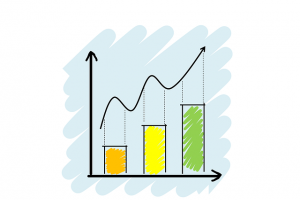Applications of Hydrology in Civil Engineering
In hydrology we apply scientific knowledge and mathematical principles to solve water-related problems in society: problems of quantity, quality, and availability. Mathematical models of all Hydrological phenomena are made. They may be concerned with finding water supplies for cities or irrigated farms, or controlling river flooding or soil erosion. Or, they may work in environmental protection: preventing or cleaning up pollution or locating sites for safe disposal of hazardous wastes.
Applications of Hydrology in different fields of Civil Engineering
Engineering hydrology has numerous applications in water resources management, engineering design, and environmental planning. Here are some key applications of engineering hydrology:
1. Flood Risk Assessment and Management:
Engineering hydrology plays a crucial role in assessing and managing flood risks. It involves analyzing historical flood data, rainfall patterns, and river flow characteristics to develop flood frequency analyses and floodplain mapping. This information helps in designing flood control measures, such as levees, floodwalls, and reservoirs, and in developing flood forecasting and warning systems.
2. Water Supply Planning:
Engineering hydrology is essential for assessing water availability and designing water supply systems. It involves estimating water demand, analyzing rainfall-runoff relationships, and determining the capacity of water sources such as rivers, lakes, and groundwater aquifers. This information guides the development of water supply infrastructure, including dams, reservoirs, and water treatment facilities.
3. Irrigation Design and Management:
Engineering hydrology is applied in the design and management of irrigation systems. It involves estimating water requirements for crops, analyzing soil moisture characteristics, and determining the most efficient methods of water delivery. This helps in optimizing irrigation scheduling, improving water use efficiency, and maximizing crop yields.
4. Stormwater Management:
Engineering hydrology is used in managing stormwater runoff in urban areas. It involves analyzing rainfall intensity, drainage systems, and land characteristics to design stormwater collection and conveyance systems. Proper stormwater management helps mitigate urban flooding, reduce erosion, and protect water quality by treating and managing runoff pollutants.
5. Watershed Management:
Engineering hydrology plays a vital role in managing and protecting watersheds. It involves studying the hydrological processes within a watershed, such as rainfall, evapotranspiration, and streamflow, to assess water availability and quality. This information guides the development of watershed management plans, including erosion control measures, land use planning, and restoration projects.
6. Dam and Reservoir Operations:
Engineering hydrology is crucial for the efficient operation and management of dams and reservoirs. It involves analyzing inflow and outflow data, rainfall forecasts, and water demands to optimize reservoir storage and releases. This helps in maintaining water supplies, generating hydropower, regulating river flows, and mitigating downstream flood risks.
7. Environmental Impact Assessment:
Engineering hydrology is applied in assessing the potential environmental impacts of infrastructure projects. It involves evaluating changes in water availability, streamflow patterns, and aquatic ecosystems due to project activities. This information guides the development of mitigation measures and environmental management plans.
8. Climate Change Impact Studies:
Engineering hydrology is used to assess the potential impacts of climate change on water resources. It involves analyzing climate models, historical hydrological data, and future scenarios to understand changes in rainfall patterns, river flows, and water availability. This information helps in developing adaptation strategies for water resource management in a changing climate.
These applications of engineering hydrology highlight its importance in understanding and managing water resources effectively and sustainably. Hydrological data, modeling techniques, and analysis tools are employed to support decision-making, optimize water infrastructure designs, and ensure the efficient utilization of water resources.
Applications of Engineering Hydrology
-
Hydrology is used to find out the maximum probable flood at proposed sites e.g. Dams.
-
The variation in water production from catchments can be calculated and described by hydrology.
-
Engineering hydrology enables us to find out the relationship between a catchments surface water and groundwater resources
-
The expected flood flows over a spillway, at a highway Culvert, or in an urban storm drainage system can be known by this very subject.
-
It helps us to know the required reservoir capacity to assure adequate water for irrigation or municipal water supply in droughts condition.
-
It tells us what hydrologic hardware (e.g. rain gauges, stream gauges etc) and software (computer models) are needed for real-time flood forecasting
-
Used in connection with design and operations of hydraulic structure
-
Used in prediction of flood over a spillway, at highway culvert or in urban storm drainage
-
Used to assess the reservoir capacity required to assure adequate water for irrigation or municipal water supply during drought
-
Hydrology is an indispensable tool in planning and building hydraulic structures.
- Hydrology is used for city water supply design which is based on catchments area, amount of rainfall, dry period, storage capacity, runoff evaporation and transpiration.
-
Dam construction, reservoir capacity, spillway capacity, sizes of water supply pipelines and affect of afforest on water supply schemes, all are designed on basis of hydrological equations.



